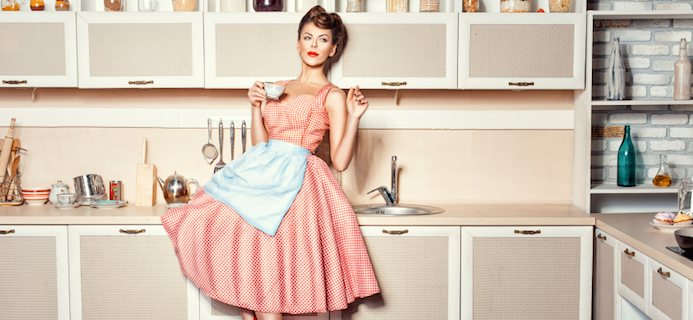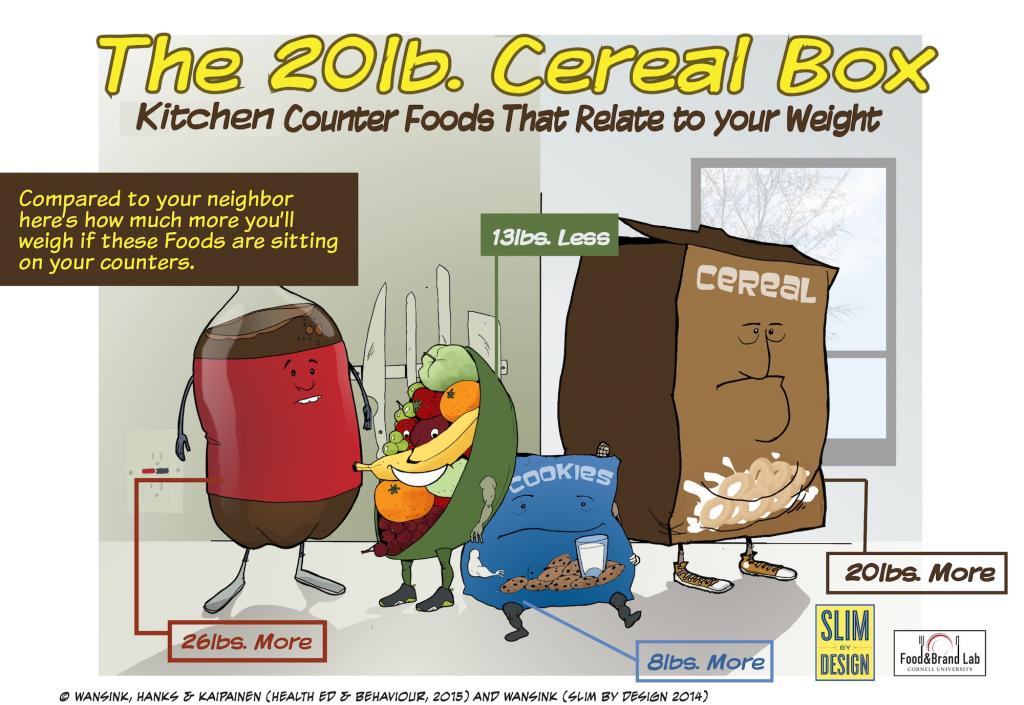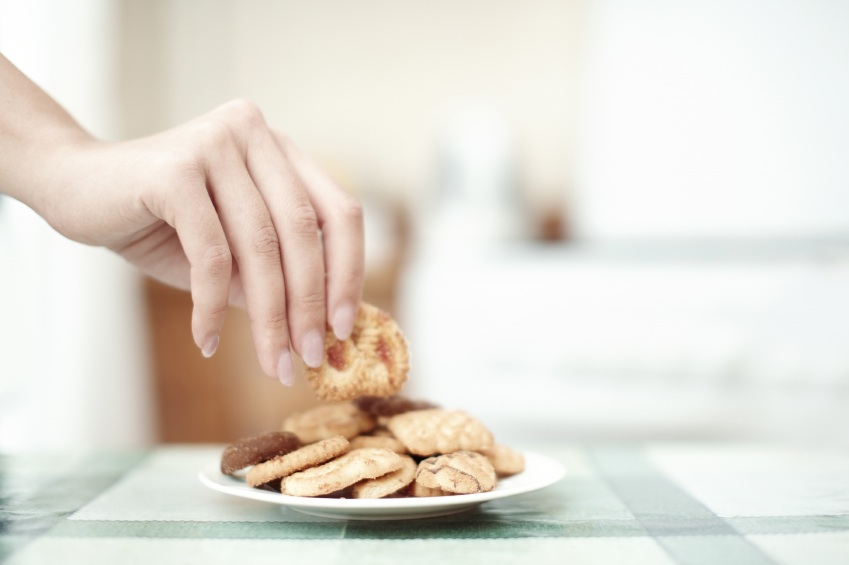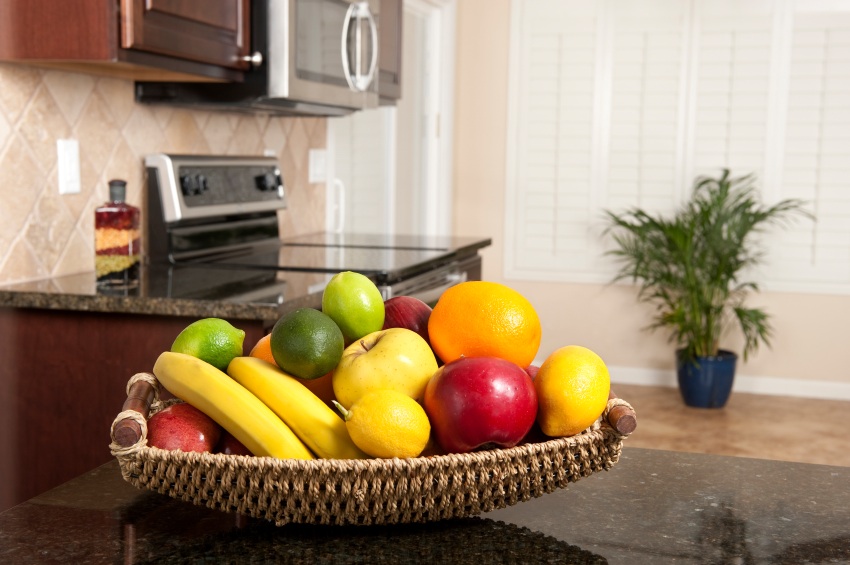Recent research has found that what you keep on your kitchen bench could be the difference between weight loss and gain. World expert researcher on obesity Brian Wansink talks to Healthista about the secret ways your kitchen is making you fat
Many people complain about their weight, and even though they exercise loads and follow a healthy balanced diet, they can’t seem to shift the pounds. But new research has found that it could actually be their kitchen that’s thwarting their weight loss efforts.
A new study from the Cornell Food and Brand Lab has found that the food on your kitchen counter can predict your weight.
women who had breakfast cereal sitting on their counters weighed 20-lbs more than their neighbours who didn’t
The study was conducted by photographing over 200 American kitchens to determine if the food sitting out on counters could predict the weight of the women living in each home. Astonishingly, the study found that women who had breakfast cereal sitting on their counters weighed 20-lbs more than their neighbours who didn’t, and those with soft drinks sitting out on the benches weighed 24 to 26-lbs more. It turned out that a fruit bowl was the only appropriate snack to have on the kitchen counter – those that kept one on their work tops weighed about 13-lbs less.
The study was conducted by Brian Wansink, professor and director of the Cornell Food and Brand lab and author of Slim by Design: Mindless Eating Solutions for Everyday Life. (£16.44) Healthista spoke to Dr Wansink, to talk about the findings and find out what else in your kitchen could be affecting your weight…
those that kept a fruit bowl on their work tops weighed about 13-lbs less.
- GET IT OUT OF SIGHT
Brian Wansink is a leading expert in changing eating behaviour and he believes that people have a see-food diet – ‘you see food and you eat it just because it’s there’. He explains why this makes it so important to carefully choose what is on your kitchen counters. ‘Having food so conveniently placed makes you want to eat it. You weren’t asking yourself if you was hungry five minutes earlier but all of a sudden you see something and it raises the immediate question ‘am I hungry and do I want to eat this?’ and often the answer is yes if you aren’t a person with strong willpower.’
Keeping food in your kitchen cupboards makes you less likely to eat it for two reasons, according to Dr Wansink. The first being you haven’t physically seen it so you don’t think of eating it. The second being, if it’s in the cupboard, you have to decide you want it enough to go and actually get it out – which usually, you don’t. ‘It makes you think more about whether you really want the food or not. There is a longer thought process involved and you usually end up thinking, ‘you know what, I’m fine, I don’t need it, I’m just going to make this phone call instead’ so you think more about it and often decide you don’t need it.
Our best and worst eating habits start in the supermarket
It’s not just food on your kitchen counter that causes you to gain weight, as Dr Wansink believes that the battle with food really starts in the supermarket. ‘Our best and worst eating habits start in the supermarket. Now people may want to know how to overcome this- well, the extreme view is to say ‘never bring anything into your home that isn’t 100 per cent healthy’, but that’s not realistic for most people. It’s not realistic for people who have little kids growing up, or people who want something to indulge on when they get home from work. So the answer isn’t to avoid buying unhealthy things altogether, instead it’s to ensure that they are not so visible and available that they become the default food you eat.’
When you’re serving onto a plate, if there’s a huge contrast between the colour of the food your serving and the colour of the plate, then you’re more likely to put less.
Interestingly, Dr Wansink has not only discovered the correlation between kitchen counters and weight, but has also found some slightly more unusual correlations. His previous research shows that even the colour of our plates can affect how much we eat.
2. EAT OFF CONTRASTING PLATES
‘When you’re serving onto a plate, if there’s a huge contrast between the colour of the food your serving and the colour of the plate, then you’re more likely to put less. For instance, lets say you’re serving a very red pasta onto a white plate- there’s going be a big contrast between the two colours so you’re going to serve less because you’re going to think ‘woah that’s a lot of pasta’. But if you serve pasta in white sauce onto the same white plate, you typically serve yourself 18-19 per cent more because the plate is the same colour as the food – it’s a trick of the eye.’
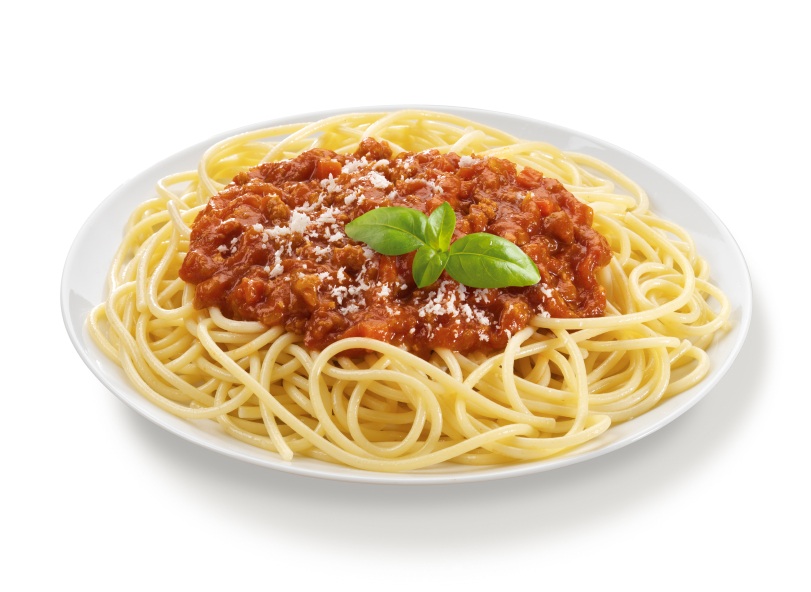
The lack of contrasting colours makes us serve more
The size of the plate we eat off is also an extremely important factor, according to Dr Wansink. ‘Our research shows that in most of the world the typical adult eats about 92% of whatever they serve themselves, so if the size of the plate causes you to serve 20 per cent more, you’re going to eat it, regardless of if you’re full or not.’
the typical adult eats about 92% of whatever they serve themselves
3. LISTEN TO MILES DAVIS WHILE YOU EAT
And it’s not only the colour and size of your plate that could be making you fat, as even environmental factors, such as music and lighting, affect our eating habits. Dr Wansink experimented with people in a fast food restaurant listening to soft jazz by Miles Davis and found that they ate 18 per cent less food than those listening to classic 70’s rock and roll. ‘If you adjust music and lighting to extend a persons dining experience, they end up eating less. This is because the more relaxed the person is, the slower they eat, and the quicker they say ‘I think I’ve had enough’.
4. GET THE EXTRA FOOD OFF THE TABLE
It’s very much a case of mind over matter and Dr Wansink reveals that we are more likely to eat quicker if we see more food in front of us. The best thing to do is not put remaining food on the table when you’re eating. ‘If you serve someone a plate of food and tell them that they can help themselves to more but leave the remains on the stove, people often don’t help themselves to seconds and eat about 20 per cent less than they do if you just put the food right in front of them.’

It’s best to serve from stove to plate directly
It’s changing our food habits that is the key. Indeed, the average person makes a staggering 200 food decisions a day without even realising, according to Dr Wansink. ‘As a result it’s easy for our environment to influence us without us knowing it. We can make subtle changes to our homes to make this work in our favour and encourage healthier habits.’
the average person makes a staggering 200 food decisions a day without even realising
‘It’s easier to become slim by design than it is to become slim by willpower. The solution to mindless eating is not mindful eating—our lives are just too crazy and our willpower too wimpy. No, it’s through tweaking our environment that we can learn to mindlessly eat better.’
It’s easier to become slim by design than it is to become slim by willpower.
‘For example, a small change like putting a fruit bowl on your kitchen counter helps remind you everyday that you should eat more fruit. Or serving your dinner straight from the stove to the plate makes it easier for you to think ‘I shouldn’t have seconds or thirds’ because even though you know you can, 20 per cent of the time you won’t.’
Making these changes to your kitchen are important no matter what, but they are especially important if you spend more time at home. ‘If you work from home you have around nine more hours during the day to walk into your kitchen and be tempted by whatever is on your kitchen counter.’
If you work from home you have around nine more hours during the day to walk into your kitchen and be tempted by whatever is on your kitchen counter
Dr Wansink admits that he doesn’t believe healthy eating tips really help people change the way they eat. ‘It’s not about giving people a tip because they just go ‘whatever’. I mean, a person that’s overweight has heard a thousand tips and they’ve figured out a thousand ways to disregard those tips.’
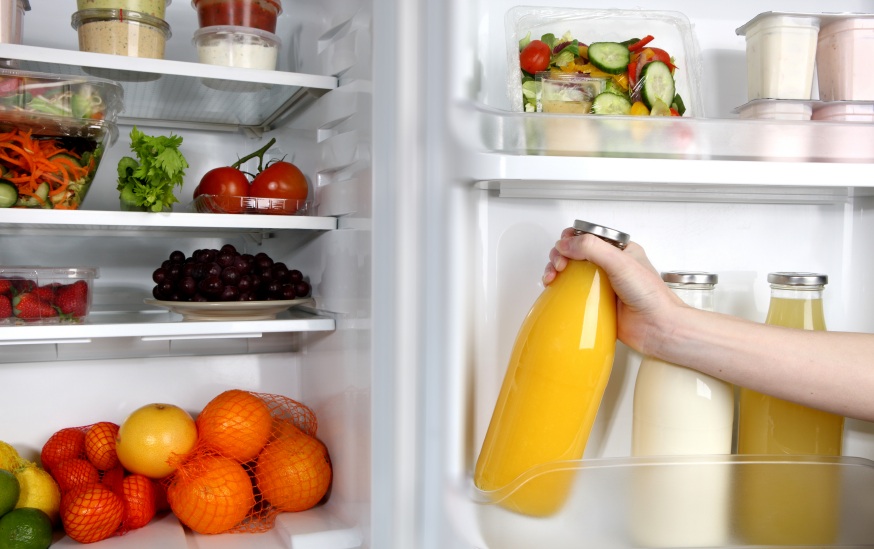
Making small changes can help make your kitchen slim by design
5. SCORE YOUR KITCHEN’S FAT FACTOR
He has another, more realistic solution. ‘The best thing to do is to download a free scorecard from slimbydesign.org. It’s a scorecard that asks ‘Is your kitchen making you fat by design or slim by design?’ and gives you both positive and negative options for how your kitchen is affecting your weight. You fill it out and the lower your score is out of 10, the more your kitchen is making you fat.
Dr Wansink has found that the scorecard seems to actually work for people. ‘If you’re interested enough to fill out something like that, then that usually means you’re bothered enough to make the changes suggested, especially when they’re so easy to make. It seems to provide people with the wake up call they need.’
Like this article? Sign up to our newsletter to get more articles like this delivered straight to your inbox.



